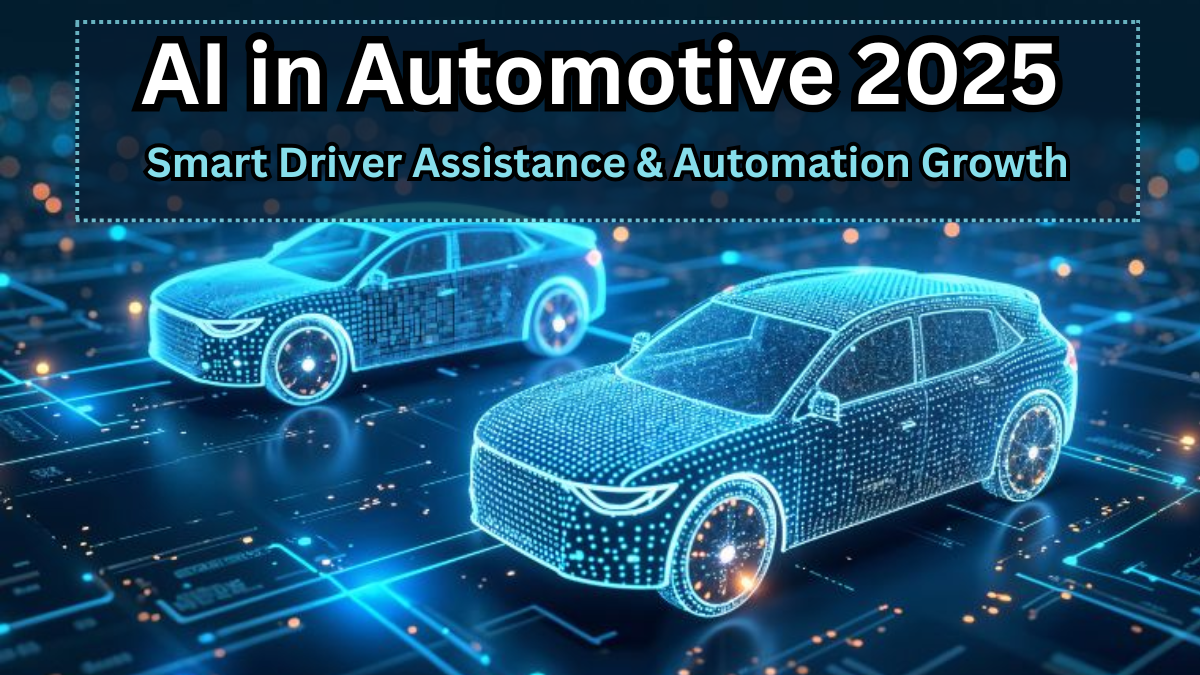The automotive industry is undergoing a remarkable transformation as AI in Automotive 2025 takes center stage. From smarter driver assistance systems to advanced automation in vehicles, AI technologies are reshaping how we drive, commute, and interact with cars.
Let’s dive into how this revolution is unfolding and what it means for both manufacturers and everyday drivers.

The Rise of AI in Automotive 2025
AI is no longer a futuristic concept for cars — it’s here, and it’s evolving rapidly. By 2025, experts predict that AI will touch almost every aspect of vehicle design and operation.
Key areas where AI is making an impact:
-
Smart driver assistance: Features like adaptive cruise control, automatic emergency braking, and lane-keeping are becoming standard.
-
Automation growth: More cars will come equipped with semi-autonomous and autonomous driving capabilities.
-
Predictive maintenance: AI helps anticipate and prevent mechanical failures before they happen.
-
Personalization: Vehicles can learn driver preferences, from seat positions to music choices.
How Automation Is Changing Driving
Automation is not just about self-driving cars. It’s about enhancing safety, comfort, and efficiency for all road users.
Here’s a quick comparison of different automation levels:
| Automation Level | Description | Example Features |
|---|---|---|
| Level 1 | Driver assistance for steering/braking | Adaptive cruise control, lane assist |
| Level 2 | Partial automation | Auto-parking, highway autopilot |
| Level 3 | Conditional automation | Hands-free in certain conditions |
| Level 4 | High automation | Self-driving in geofenced areas |
| Level 5 | Full automation | Completely autonomous with no driver needed |
By 2025, we can expect most new vehicles to offer at least Level 2 automation, with Level 3 becoming more common in premium models.
Smart Driver Assistance: What’s New?
Driver assistance technology is getting smarter and more responsive, thanks to AI. These systems are designed not just to support drivers, but to actively prevent accidents.
Top innovations in driver assistance:
-
AI-powered vision systems that detect pedestrians and cyclists with greater accuracy.
-
Traffic jam assist to reduce driver fatigue in slow-moving traffic.
-
Advanced parking assistance that can handle complex parking scenarios automatically.
As AI in Automotive 2025 advances, these features are expected to become affordable and accessible even in mid-range cars.
Benefits of AI-Driven Vehicles
Here’s why AI in Automotive 2025 is creating excitement across the automotive world:
-
Enhanced safety: Fewer accidents thanks to predictive systems and real-time alerts.
-
Reduced driver stress: Smart driver assistance minimizes manual tasks.
-
Environmental efficiency: AI optimizes routes and fuel use, supporting greener transportation.
-
Convenience and comfort: Personalized settings and voice-activated controls make driving easier.
Challenges and the Road Ahead
Despite the optimism, the journey toward full automation still faces hurdles:
-
Infrastructure gaps: Roads and traffic systems need to adapt to smart vehicles.
-
Regulatory concerns: Governments must establish clear rules for autonomous driving.
-
Cost barriers: Advanced AI systems can still be expensive for budget models.
However, industry experts believe that with continuous innovation, these challenges will be overcome — making AI a standard feature in cars of the future.
FAQs
Q1. What is the key focus of AI in Automotive 2025?
AI in Automotive 2025 is focused on advancing smart driver assistance systems, predictive maintenance, and higher levels of automation for safer and more efficient driving.
Q2. Will full automation be common by 2025?
While full automation (Level 5) will still be in testing phases, we can expect significant growth in Level 2 and Level 3 automation, especially in premium vehicles.
Q3. How does AI improve driver assistance systems?
AI enhances driver assistance by enabling better object detection, faster reaction times, and personalized alerts that adapt to driving conditions in real time.
Q4. Are AI-based automotive technologies affordable?
Many AI-driven features like basic driver assistance are becoming standard in new models. However, more advanced automation is still largely available in higher-end vehicles, though costs are expected to drop as technology matures.
Click here to learn more
